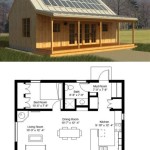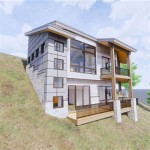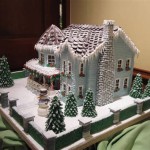Classic Craftsman Style House Plans: Unveiling Their Essential Elements
Classic Craftsman style house plans embody a harmonious blend of rustic charm and architectural elegance. These timeless designs evoke a sense of warmth and coziness while showcasing a refined aesthetic. If you're considering a Craftsman-style home, understanding its defining characteristics will help you create a truly authentic and captivating abode.
1. Low-Pitched Roofs with Wide Overhangs
Craftsman homes are instantly recognizable by their low-pitched gable or hipped roofs. These roofs often extend beyond the walls, forming wide overhangs that provide shelter from the elements and add visual interest. The overhangs are typically supported by exposed rafters or brackets, further enhancing the home's rustic appeal.
2. Natural Materials and Earth Tones
Craftsman homes embrace natural materials such as wood, stone, and brick. Wood is prominently featured in the exterior cladding, often combined with stone or brick accents around the foundation and chimneys. Earth tones, such as greens, browns, and reds, dominate the color palette, complementing the natural materials and creating a sense of harmony with the surroundings.
3. Wide Porches and Terraces
Expansive porches and terraces are hallmarks of Craftsman-style homes. These outdoor living spaces are designed to seamlessly blend with the interior, extending the living area and providing ample opportunities for relaxation and entertainment. Porches are often supported by sturdy columns and feature decorative railings and lighting fixtures.
4. Built-in Features and Craftsmanship
Craftsman homes emphasize built-in features that add both function and beauty. Window seats, benches, bookcases, and fireplaces are seamlessly integrated into the design, creating cozy and inviting spaces. The woodwork throughout the home is typically of high quality, showcasing the skill and attention to detail that went into its construction.
5. Open and Flowing Floor Plans
Craftsman-style homes often feature open and flowing floor plans that maximize natural light and create a sense of spaciousness. Living areas, dining rooms, and kitchens flow effortlessly into one another, fostering a sense of community and togetherness. Large windows and doors connect the interior with the outdoors, bringing the beauty of nature into the home.
6. Decorative Details and Accents
Craftsman homes are adorned with decorative details that add character and charm. These include exposed beams, arched doorways, built-in cabinetry, and stained glass windows. Exterior details such as trellises, window boxes, and decorative moldings further enhance the home's aesthetic appeal.
7. Sustainability and Energy Efficiency
Classic Craftsman style house plans often incorporate sustainable and energy-efficient features. The use of natural materials, low-pitched roofs, and wide overhangs contributes to temperature regulation and reduces energy consumption. Additionally, many modern Craftsman-style homes feature energy-saving appliances and renewable energy sources such as solar panels.
In conclusion, classic Craftsman style house plans offer a timeless and inviting architectural style that blends natural materials, earth tones, and exquisite craftsmanship. By incorporating the essential elements discussed above, you can create a home that exudes warmth, comfort, and a touch of rustic elegance.

The Varina 1920s Bungalow 1923 Craftsman Style From Standard Homes Company Hous House Plans

1922 Craftsman Style Bunglow House Plan No L 114 E W Stillwell Co Bungalow Floor Plans Vintage

Vintage Craftsman Bungalow Plans Style House Vinta

Charming 1920s Home Design

Practical Homes 1926 Craftsman House Plans Bungalow Exterior Design Pictures

Classic 1918 Craftsman Style Bungalow Design Shingled Cottage House Plans

Classic Craftsman Bungalow Sears Modern Home No 264b234 Inglenook Hollywood

1920s Classic Bungalow Small Homes Books Of A Thousand Atterbury Floor Plans Vintage House Craftsman

Northwest Craftsman House Plan Seattle Vintage Houses 1908 Western Home Builder Design No 43 V W Voorhees

Craftsman Bungalow House Plan 1918 Representative Homes E Floor Plans








